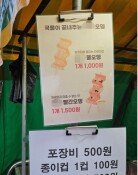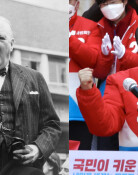Housing-vulnerable population increased to hit 1.83 million
Housing-vulnerable population increased to hit 1.83 million
Posted July. 31, 2023 08:12,
Updated July. 31, 2023 08:12
Last year, the number of vulnerable people living in shacks, vinyl greenhouses, and those who moved from one inn to another increased for the first time in four years. It is believed that the living conditions of vulnerable people worsened in the aftermath of high-interest rates and the economic downturn.
According to Statistics Korea Sunday, the number of people living in ‘living quarters other than housing’ excluding office-residential buildings was 1.83 million last year. This represents a 41,000 (2.3 percent) gain from a year earlier. A non-housing living quarters is a living space that, unlike a house built for human habitation, does not have more than one room, a kitchen, and an independent entrance. Specifically, these include office-residential buildings, rooms in hotels and inns, dormitories and special social facilities, shacks, greenhouses, and temporary barracks at construction sites. Most of these groups, except those living in office-residential buildings, fall under the housing-vulnerable group.
The number of people living in ‘living quarters other than housing,’ excluding office-residential buildings, peaked in 2018 and fell by more than 200,000 over the next three years before rising again last year. Analysts say that as lending rates soared and the economy slowed last year, the vulnerable were hit hard and forced into poor housing conditions. Last year, the amount of total lumpsum downpayment unrepaid after the expiry of rent by rogue landlords (multi-home owner debtors subject to intensive state management), who habitually failed to repay jeonse rental home downpayment, soared 23 percent from a year earlier to 438.2 billion won (343 million U.S. dollars).
1am@donga.com
Headline News
- Joint investigation headquarters asks Yoon to appear at the investigation office
- KDIC colonel: Cable ties and hoods to control NEC staff were prepared
- Results of real estate development diverged by accessibility to Gangnam
- New budget proposal reflecting Trump’s demand rejected
- Son Heung-min scores winning corner kick







